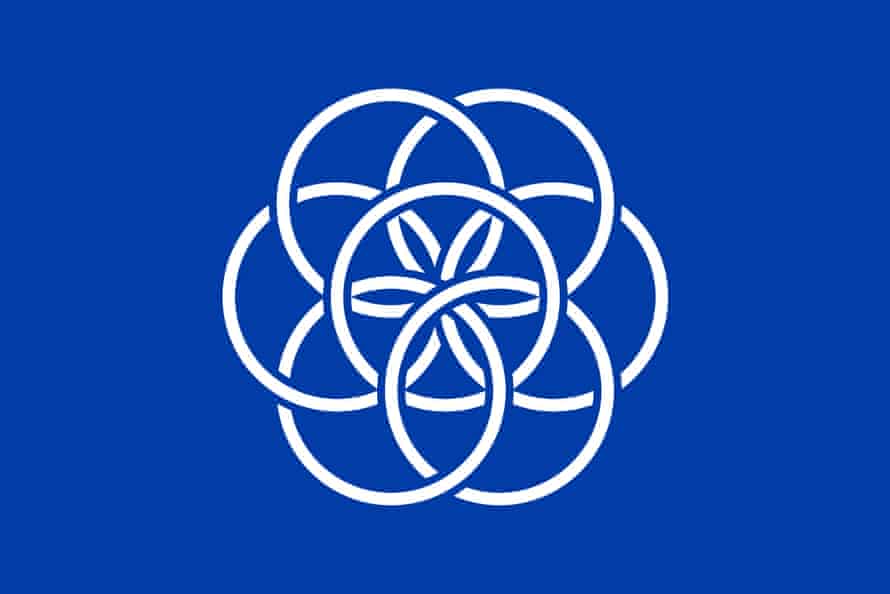Shared from www.theguardian.com
You needn’t be a Hollywood expert to be familiar with the movie motif of a flag fluttering on a conquered planet far away. But as real-life space exploration is an increasingly global collaboration, isn’t it time Earth had its own flag? I asked Oskar Pernefeldt, Swedish founder of the International Flag of Planet Earth Organization, which campaigns for his Earth flag to be adopted.
Hi Oskar! Tell me more about the flag you’ve designed. I know it’s blue – presumably for water because we’re the blue planet?
Yes, it’s blue, and in its centre are seven connected rings forming a flower, which represents life on Earth and how we’re all connected, and our challenges are shared.
Is that how flags work? Someone makes one and then a nation says, “OK, sure.”
Kind of. Usually people design a flag and then propose it to someone – like to a newly formed nation.
But how will we – the world – show our agreement? Please, no more referendums.
Our hope is for it to be unofficially recognised. Like the rainbow flag, which was proposed in 1978. That didn’t have a client – it was just a flag that informally became adopted by enough people until it became a symbol of the LGBTQ+ community. And there is a practical use: like how on a drop-down menu with countries represented by their flags, there’s no image for global.
I can see how it might lend itself to protest movements.
I’ve already seen it at climate demonstrations, and it’s been on refugee boats in the Mediterranean. I come from a flag enthusiast’s perspective and I just saw a gap in the flag system. I could totally see other planets having a flag, too.
Sign up to our Inside Saturday newsletter for an exclusive behind-the-scenes look at the making of the magazine’s biggest features, as well as a curated list of our weekly highlights.
Why do you love flags so much? I always considered myself flag neutral, maybe even flag avoidant if it’s getting a bit too nationalistic.
But that’s why I love flags. People attach so many emotions to them. And when you study them, you can see what a country wants to represent. So you might see in a symbolic description of a flag that red stands for the bloodshed in the creation of the country. And then there are the different customs and schools of thought. One convention is not using typography – yet Saudi Arabia and South Korea do. Another is that a child should be able to draw it. But that’s not the case with Wales.
Why do neighbouring countries often have similar colours?
It’s a shared culture thing. So a lot of flags in the Middle East use what’s called the pan-Arab colour scheme: Kuwait, Iraq and Palestine all have white, red, green and black. The pan-Slavic colours, used in the Balkans, are red, white and blue.
If I was commissioning one for the Republic of Coco, I’d be tempted to strike out on my own. Anyone done a purple flag? Presumably, Prince.
I’ve only seen it once – the Scouts.
I don’t know why I’m surprised there is so much meaning. Symbols have power, it’s why we argue about them. And I suppose if we get rid of old symbols, we need new ones in their place.
That’s exactly why I proposed it. Maybe people don’t feel an emotional connection to their home country, but they see themselves as global citizens. But, given the state we’re in and the challenges we face, I think we need a symbol to rally around.
Images and Article from www.theguardian.com

